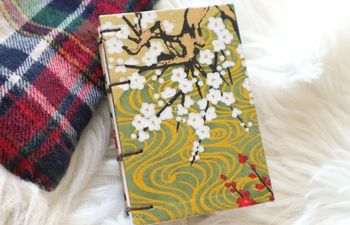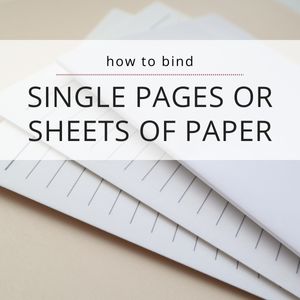Is it really possible to create a book in under an hour? Yes, it is! This simple tutorial will show you how to use the Perfect Binding method to make a handy notepad in 15 minutes or less.
What is a “perfect binding”?
By definition, a perfect binding is one where sheets of paper are glued together at the spine instead of sewn. Tear away notepads and paperback fiction novels from the bookstore are perfect bindings. This binding type is great if you don’t like to sew or need a way to bind single sheets of paper together (think: rebinding your D&D guide).
I love using this method to create quick notepads with scrap paper so nothing goes to waste. I also like using decorative cardstock as covers. It’s a quick way to make a pretty gift for employees, students, friends, etc. and awesome stocking stuffers for the holidays!
Learn more about the Perfect Binding method.
Materials:
- 1/2″ thick stack of single sheets of paper size 3″ x 2.75″ (any paper is fine – even printer paper!)
- 1 piece of cardstock, any color or design of your choice, in size 6.5″ x 2.75″ (this will be your notepad cover)
- 2 binder clips at least 1-1/2″ wide OR two easy grip clamps that won’t damage paper
- Bone folder or any tool that can be used to score a line without tearing paper
- 12″ ruler
- Elmer’s glue
- Paste brush OR use your fingers 🙂
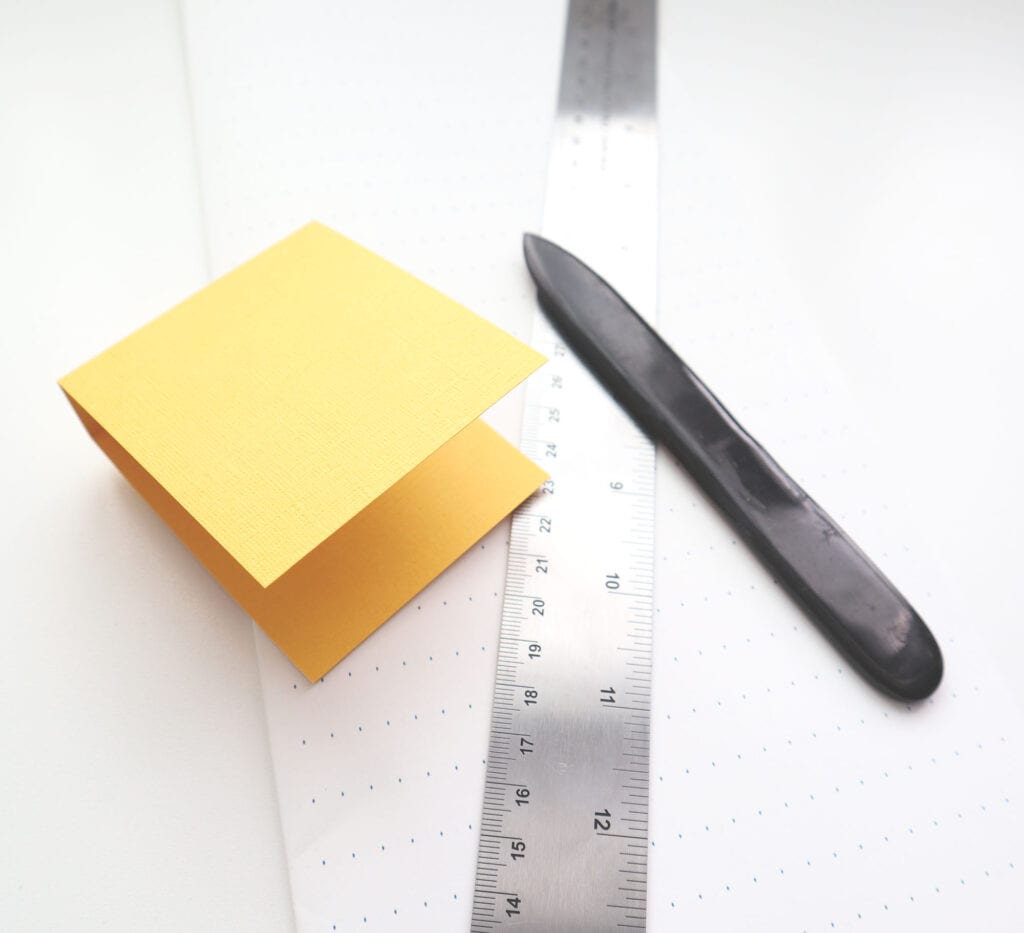
Steps:
- Using your ruler and bone folder, score a line on the cardstock at 3″ and 3.5″ (photo #1)
- Fold the paper on each score line. This should form a 3-sided box with one open side (see photo # 2)
- Stack up your lose sheets of paper so they’re flush on one side (the other side won’t be as flush; this is ok and exactly what you want!)
- Place a binder clip or clamp on each side of the stack to hold the paper in position. Make sure the uneven side is facing up and closest to the the binder clips (see photo #3)
- With the paper stack now free standing (if not, prop it up with something nearby), start applying a layer of glue with your fingers or paste brush (see photo #4)
- As you’re applying glue, always brush the glue from center outward to each side (see photo #5)
- Allow to dry fully (around 2-5 minutes) (photo #6)
- Apply a second layer of glue and allow to dry. At this point, I recommend a third and even fourth layer of glue if you have time (optional – but makes a stronger book)
- Remove the clips. Your pad should stand solo now with the glue holding everything in place
- Apply another layer of glue and adhere the cover to the notepad. Press the cover to the spine and remove any excess glue that seeps out on either side (photo #7)
- Instead of using clips to hold it in place (the clips might dent the cover), set the book on its side and rest something heavy (2lbs or more) on it
- Allow the book to fully dry before using. I recommend letting it dry overnight if possible, but a few hours is fine (photo #9)
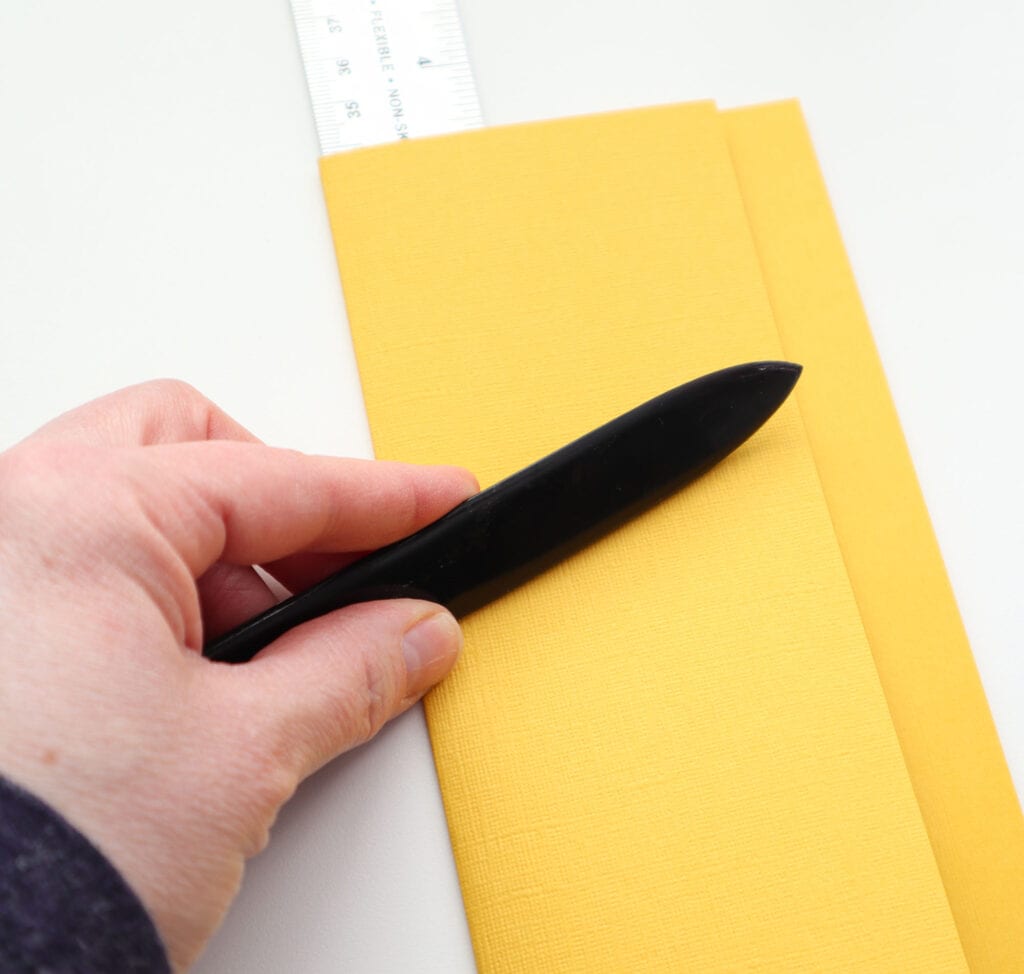
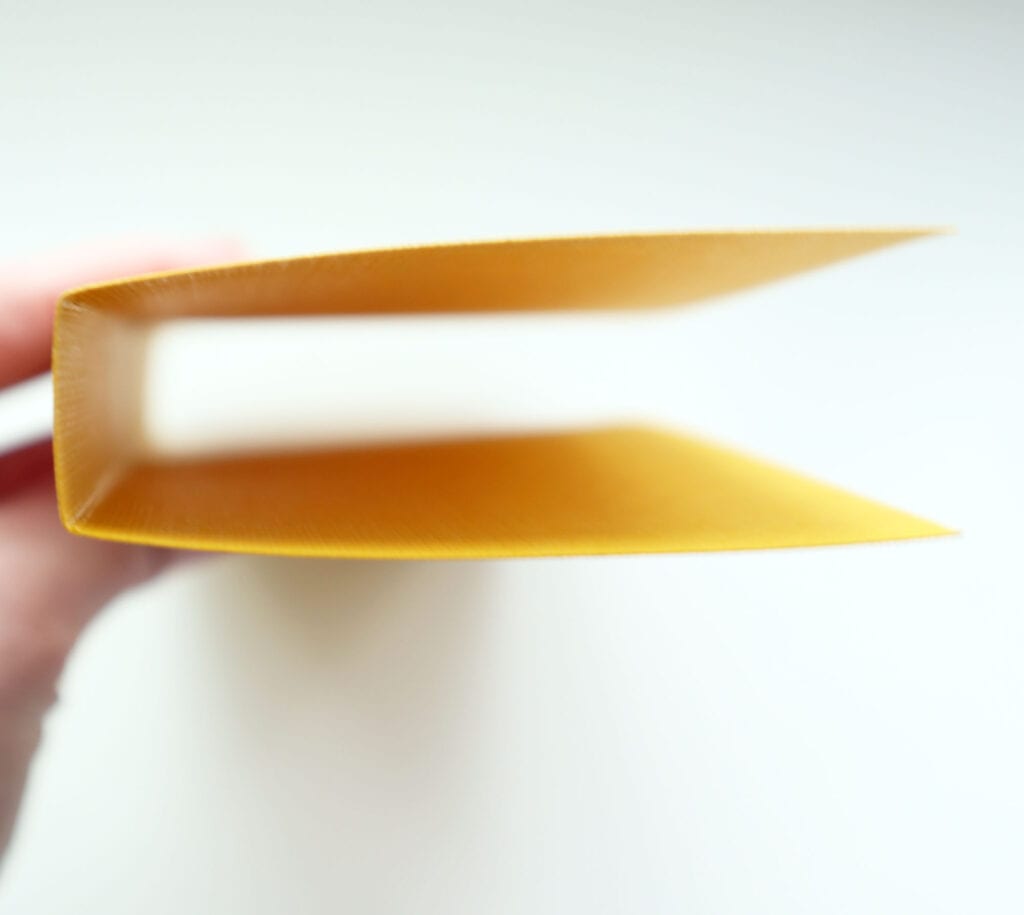
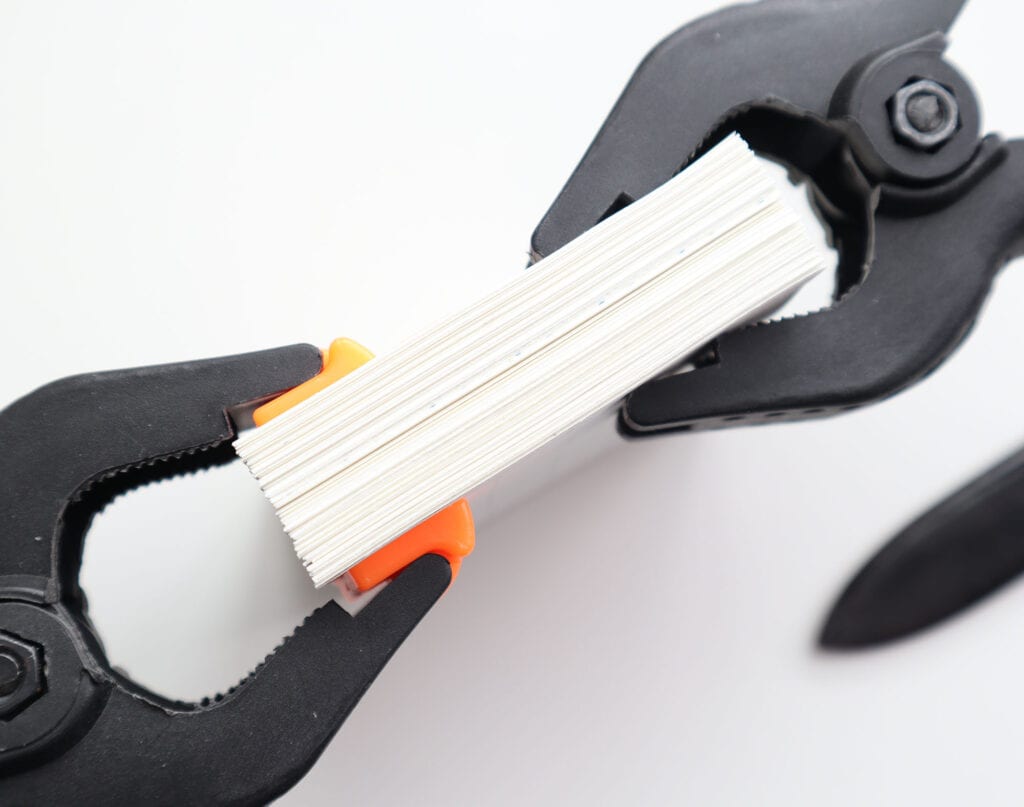

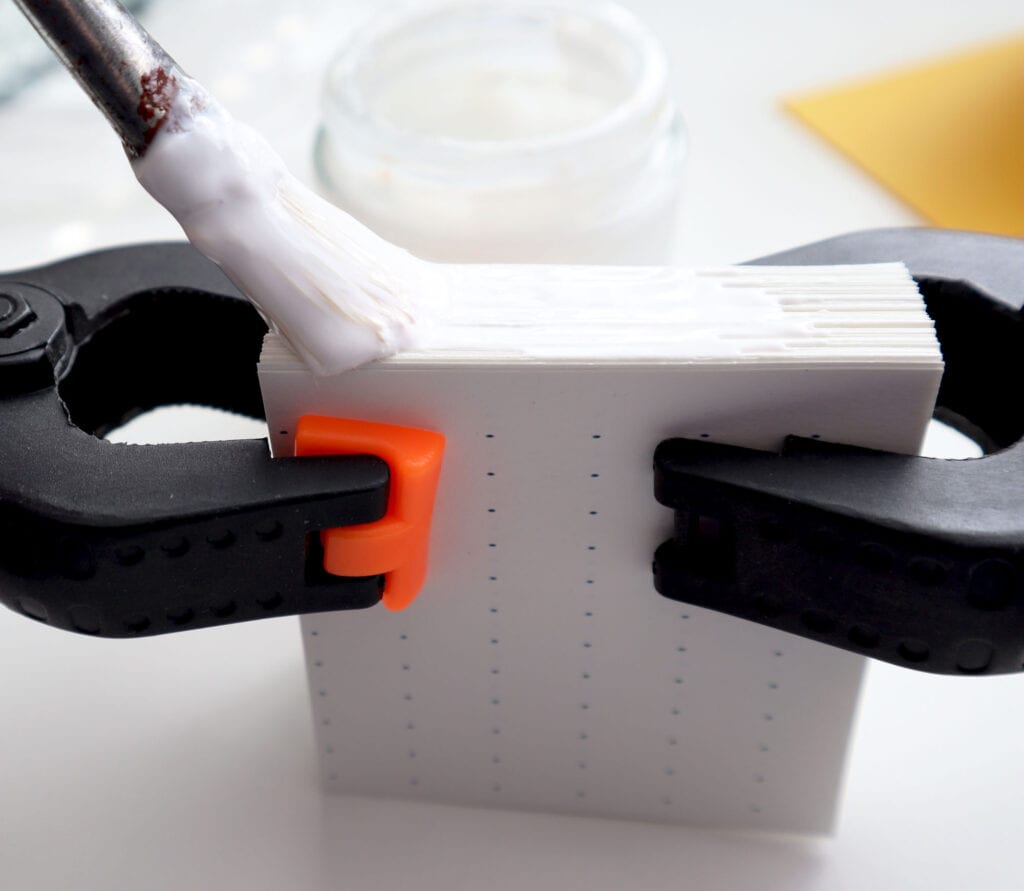

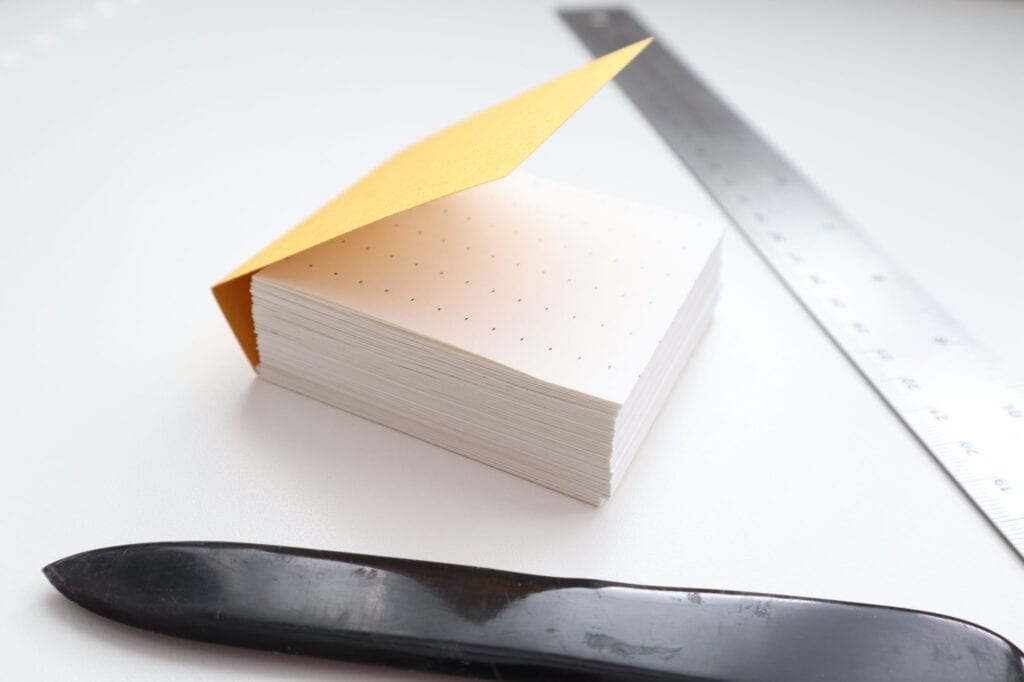
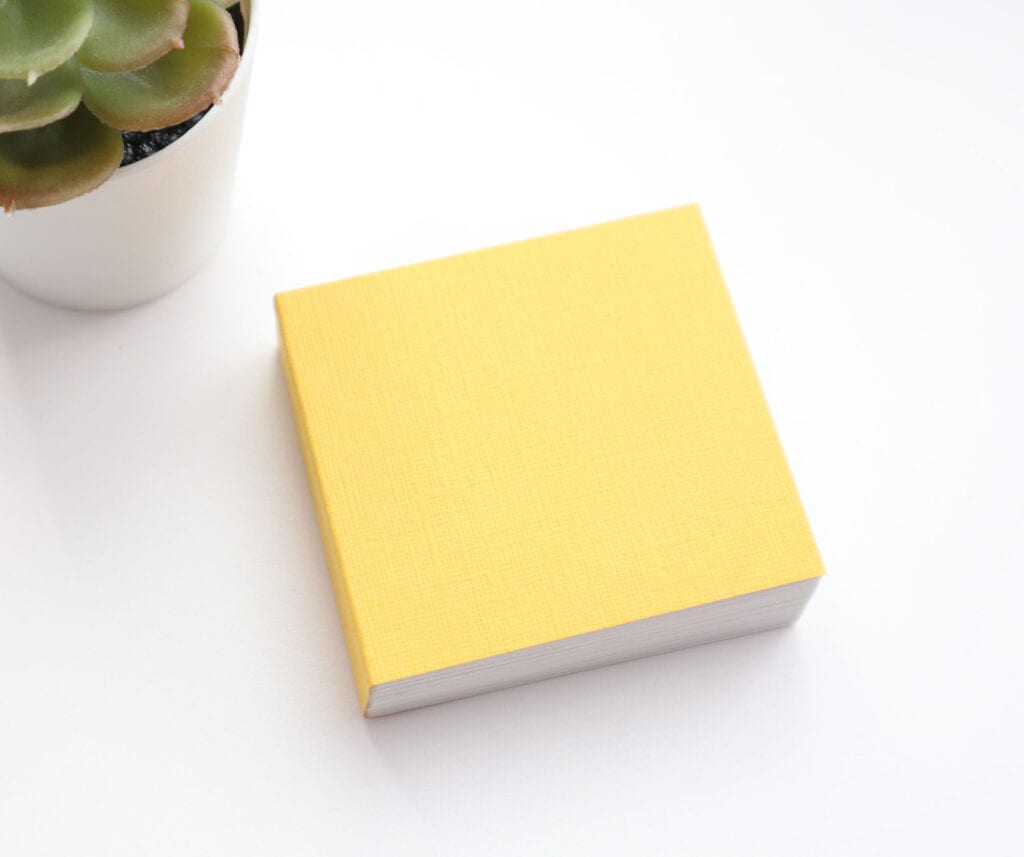
Once the book is done, you’ll have a useful notepad for all of those last minute scribbles, grocery store lists or quick notes in lunch boxes. Don’t be afraid to experiment with different types of papers. Use stamps for unique designs, or embellish with adhesive gems or jewels. Lots of options, my friend.
Resources
If you liked this tutorial, be sure to join my mailing list. Subscribers get access to new tutorials before anyone else!
If you haven’t already, grab my Bookbinding Tools & Supplies Quick Start Guide to learn about these tools, which to buy first and where to go online.
Thanks for checking out this quick & easy tutorial. Stop by Instagram & Facebook to show me what you made!
ALL my best,
Misty



